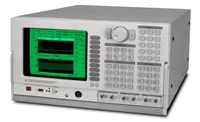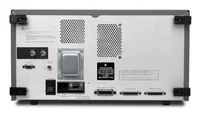Presupuesto Rápido: Stanford SR785
Stanford SR785
Dynamic Signal Analyzer; 2 Channel, 100kHz
Modelo
SR785Familia de productos
MultimeterFabricante
StanfordLos modelos configurados tienen las siguientes opciones:
MultimeterData AcquisitionCounters & Function GeneratorsDynamic Signal Analyzers - FFTConfiguraciones
Especificaciones clave
Vista general del producto
Recursos
Escoger su configuración
Show:
Opciones disponibles para Stanford SR785
| Opción ID | Descripción |
|---|---|
| 0780M1 8MSample memory |
Mostrando 1 - 2 de 2 resultados
1
DC-102.4kHz Two Channel FFT Dynamic Signal Analyzer
ID de producto: P-558577
Alquiler
Confirmado en Presupuesto
Presupuesto
Soluciones Financieras
Pregunte ahora para conocer más
2
DC-102.4kHz Two Channel FFT Dynamic Signal Analyzer
ID de producto: P-558578
Alquiler
Confirmado en Presupuesto
Presupuesto
Soluciones Financieras
Pregunte ahora para conocer más
Mostrando 1 - 2 de 2 resultados
* Los precios y la disponibilidad están sujetos a cambios sin previo aviso. Todos los precios pueden variar debido a los términos de envío, el IVA o el impuesto de ventas, los aranceles de importación y los tipos de cambio. Los productos pueden no estar disponibles en todas las ubicaciones. Cualquier ahorro listado se basa en el precio de lista completo de instrumentos nuevos; Los ahorros reales pueden variar según las opciones, la configuración, los tipos de cambio de divisas y otros factores. La garantía puede variar según la categoría o el producto específico disponible. Todos los términos deben ser confirmados en el presupuesto por escrito.
¿No encuentra lo que está buscando?
Póngase en contacto con nosotros
Recomendaciones alternativas






